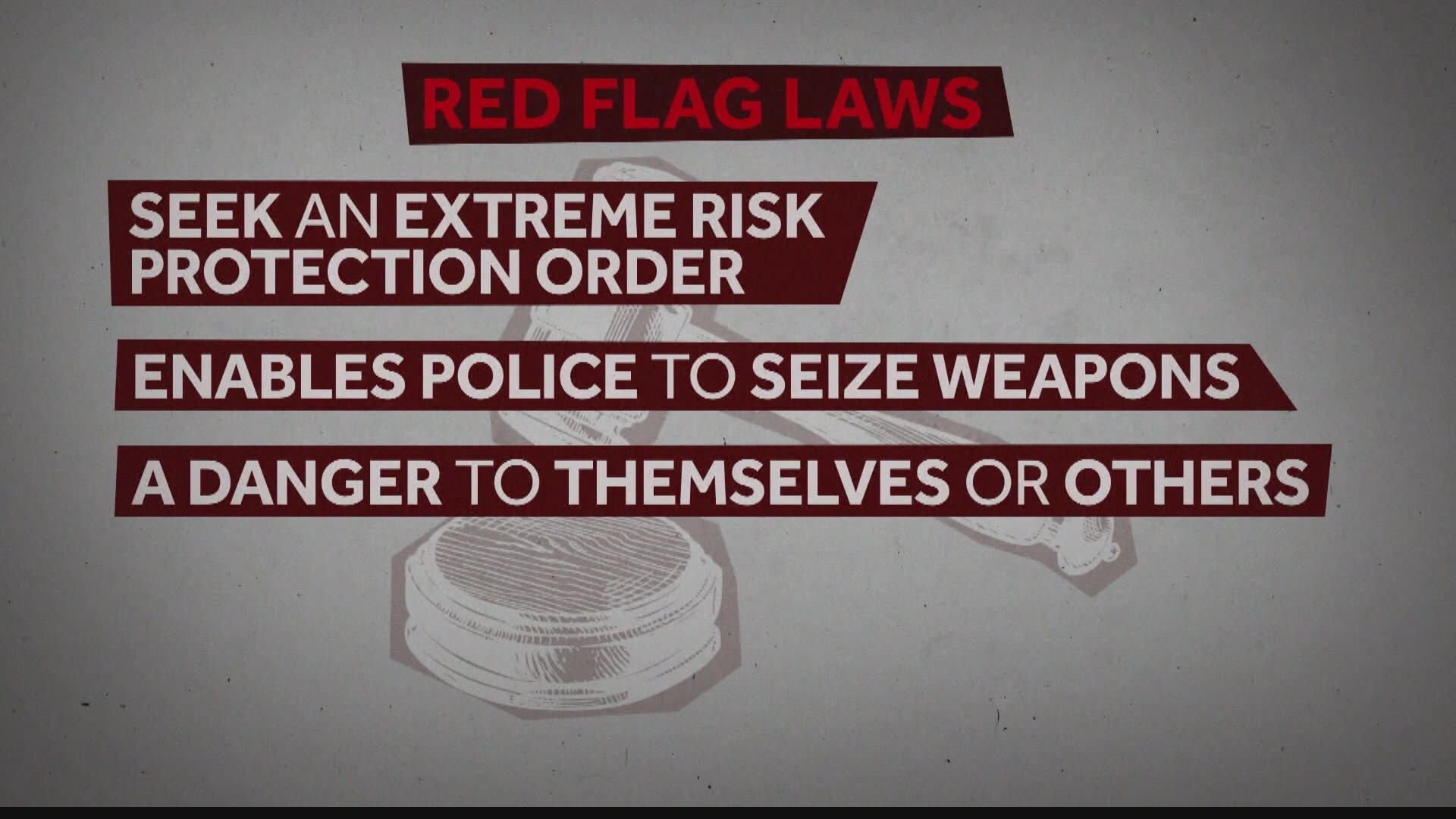INDIANAPOLIS — The mass shooting at an Indianapolis FedEx Ground facility has prompted a lot of talk about red flag laws. What exactly is that, and how is it supposed to work?
Indiana passed one of the nation's first red flag laws back in 2005, following the death of an Indianapolis Metropolitan Police officer. Known as the Jake Laird Law, the Indiana statute allows law enforcement to seize and retain firearms from mentally ill people who are considered a danger to themselves or the community.
"Red flag" refers to catching warning signs — or red flags — that someone who possesses a gun is mentally ill and is likely to use that firearm to harm themselves or others.
In that situation, the law allows police to seize the person's firearm to keep them and the community safe.
How to trigger the red flag law
First, police are allowed to seize a gun from someone if they have reason to believe the person presents an imminent risk of injury to themselves or others — and that the person has a mental illness that is not being controlled by medication (or that the person is not regularly taking the medication they have been prescribed to treat their mental illness).
Whether law enforcement seizes the gun with an arrest warrant and probable cause, or if they seize it without a warrant, police wanting to take possession of a firearm under the red flag statute must tell the court WHY they think the person is dangerous.
The court has 14 days to review the case, and the gun owner can present a defense to explain why he feels he should get his gun back.
"Normally people do not feel the police have the right to come to their house and take their firearm. This is an unusual situation," explained Indianapolis defense attorney Jack Crawford. "What you're doing is you're balancing the Second Amendment rights of citizens to have firearms with the general public concern over dangerous persons. That's a tough balance to achieve."
If the court does not find probable cause exists for police to keep the gun, it must be returned to the owner.
But if the court finds there is probable cause to keep the weapon due to safety concerns, police can hold onto it pending another review hearing. At the same time, the judge can sign a court order to prevent that person from making future gun purchases. That only takes place if the judge specifically prohibits the individual from purchasing or possessing firearms.
"The red flag law is not automatic. It's discretionary, with a lot of different people involved in the system: the police, the prosecutor's office, the judiciary," Crawford told 13News.
And triggering the Red Flag law takes more than a judge's order. Law enforcement must also send that court order to the FBI for it to be entered into the national background check system.
If that does not happen, a mentally ill and dangerous person can go buy another gun without the system "flagging" the danger and blocking the future purchase.
Critics say Indiana's law does not go far enough because it is discretionary and allows a mentally ill gun owner to purchase another gun just days after one has been seized by law enforcement. And in the case of the 19-year-old suspect, who IMPD says shot and killed eight people and himself at a FedEx facility April 15, despite showing signs of mental illness and having a gun confiscated by police one year before the shooting, a hearing was never held to allow a judge to find him dangerous enough to place him on the federal Red Flag list.
"The law did not work the way it is supposed to. It definitely failed the victims in this case," Crawford said.
“We’ve had the law on our book for 22 years now and the same deadline, 14 days, and the prosecutors have met that burden repeatedly thousands of times over the last 22 years so maybe this prosecutor is unaccustomed on how to do it, but I can tell you that people do it in Connecticut with no problems,” said Mike Lawlor, University of New Haven.
“My personal viewpoint is I don't think they work well together whether right now they don't they used to in the past. But I don't think right now they worked well together,” said Mike Laird, Jake's father.
“Could something have been done to possibly interrupt the chain of events that lead to this outcome, and we now know an opportunity did exist. Therefore, we want to make clear a loophole did not fork this opportunity, instead, the process was sidestepped,” said Rick Snyder, president of the Indianapolis Fraternal Order of Police, Lodge #86.

